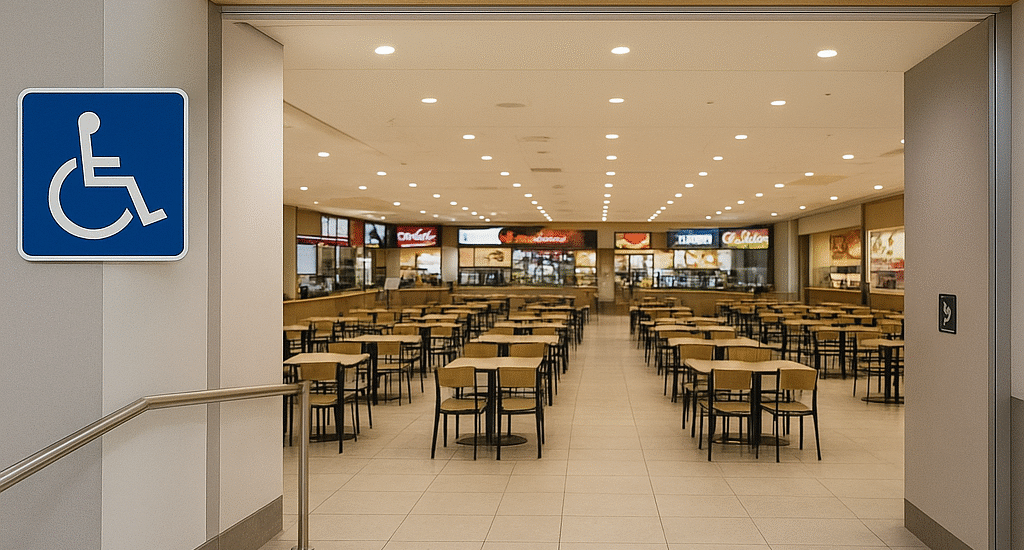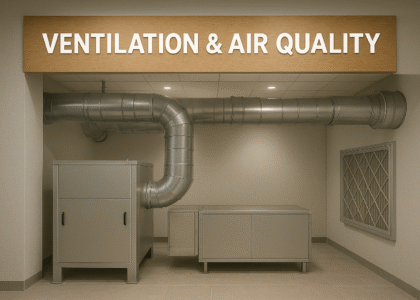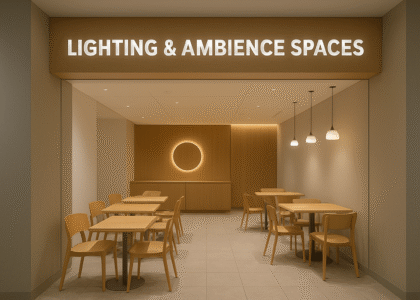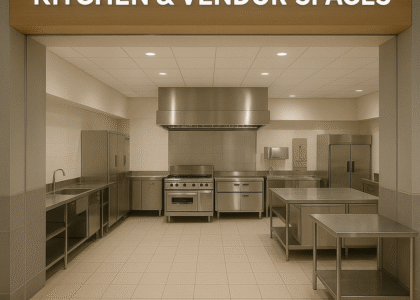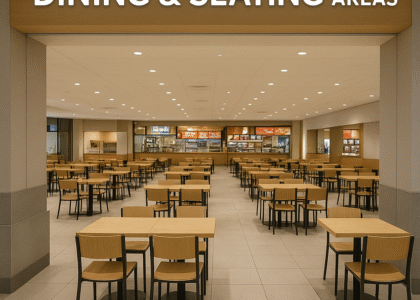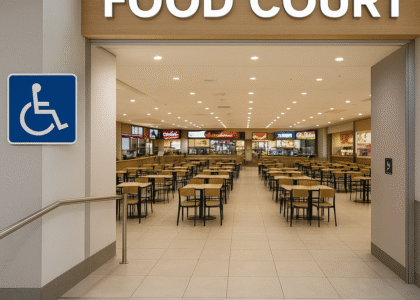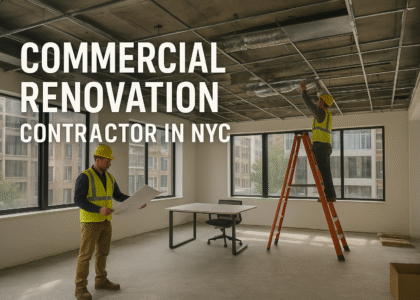In modern shopping centers across the USA, food courts are more than dining areas they are social hubs, community spaces, and traffic drivers. A well-designed food court increases shopper dwell time, boosts tenant revenue, and elevates the overall shopping experience. That’s why food court construction focuses on every space: from seating and kitchens to restrooms, lighting, and ventilation.
1. Entrances & Accessibility
- Entrances must be welcoming and easy to locate with clear signage and open layouts.
- Wide walkways, escalators, and elevators ensure accessibility for all visitors.
2. Dining & Seating Areas
- Flexible layouts with a mix of communal tables, cozy booths, and outdoor dining.
- Durable furniture designed to handle high foot traffic.
- Use of natural light and biophilic design to create a lively, modern atmosphere.
3. Kitchen & Vendor Spaces
- Each vendor stall needs customizable fit-outs to suit restaurant operations.
- Shared kitchen facilities must include proper ventilation, grease traps, and fire suppression systems.
4. Lighting & Ambience
- Skylights or large windows maximize natural light.
- LED lighting reduces energy costs while enhancing dining comfort.
- Accent lighting at vendor stalls helps highlight individual brands.
5. Ventilation & Air Quality
- Food courts require advanced HVAC systems to maintain fresh air despite multiple cuisines.
- Airflow planning ensures smoke and odors don’t spread across dining areas.
- Smart climate control systems improve energy efficiency.
6. Flooring & Finishes
- Use non-slip, durable flooring that withstands heavy use.
- Materials should be easy to clean and resistant to spills and stains.
- Popular finishes include polished concrete, porcelain tiles, and engineered wood accents.
7. Restrooms & Hygiene Spaces
- Restrooms located near food courts must be designed for high occupancy.
- Touchless fixtures, durable partitions, and proper ventilation improve hygiene.
- Signage and accessibility features are essential for ADA compliance.
8. Technology Integration
- Self-order kiosks and mobile ordering reduce wait times.
- Digital menus and displays support vendors in updating offers quickly.
- Smart occupancy sensors help manage peak hours efficiently.
Food court construction in the USA requires a multi-layered approach—from functional vendor kitchens to inviting seating, modern restrooms, and sustainable solutions. By designing every space with efficiency, comfort, and style, shopping centers can create food courts that attract visitors, support tenants, and boost overall profitability.



